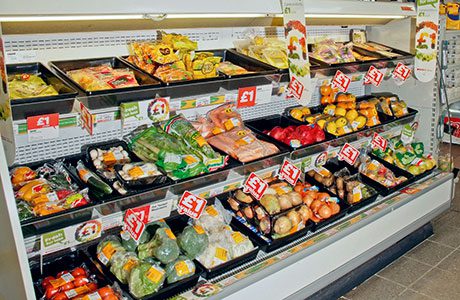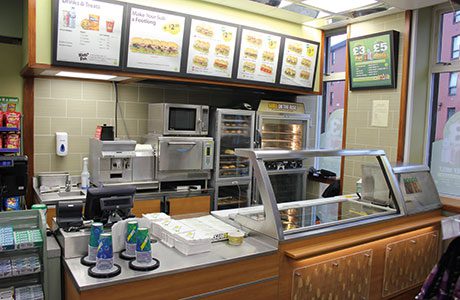Much of the news on the symbol sector is still very positive. Forecasts for future trading and market share are robust. But symbol-branded shops face new challenges.
One comes from the very significant increase in the number of small format supermarkets from the multiple grocery giants like Tesco and Sainsbury’s.
Another comes from competitor symbol groups. Expect the competition between fascia organisations to heat up!
In our latest fascia focus we round up latest developments, update our list of things would-be symbol retailers should consider, and the fascia companies explain what they have to offer.
[hr]
Fascia groups make progress as challenges mount
Research firms highlight strengths and threats
FOR several years symbol stores including those run under fascia such as Best-one, Costcutter, Day-Today, Keystore, Lifestyle Express, Nisa, Premier, Shopsmart, and Spar have formed one of UK food and drink retailing’s success stories.
The organisations and the stores themselves responded very effectively indeed (perhaps more effectively and successfully than anyone other than the biggest discounters) to the recession and the hard economic times that followed.
A combination of significantly improved standards and strong promotions has appealed to consumers in Scotland and other parts of Britain who were more than ready to reconsider their shopping habits, in a bid to avoid spending precious cash on fuel or public transport fares, and were keen to shop more frequently and more locally in a bid to avoid waste.
But the retailing environment is, as ever, changing. The supermarket giants – especially Tesco and Sainsbury’s in the last few years in Scotland’s major cities and towns –are moving into the c-store retailing space with a vengeance.
For some the performance of the giants has been patchy with some of the supermarkets’ c-stores doing well and others, apparently, far less so.
But overall they’re increasing store numbers and the share they take of c-store sales considerably.
And the traditional symbol store scene is changing too. This summer is scheduled to see the final practical separation from the Nisa distribution system of the various stores of Costcutter Supermarkets Group. It will also see the introduction of the new arrangements following the formation of buying group The Buyco with Palmer & Harvey, the transfer of Mace stores into the Costcutter system, and the provision of wholesaling services by Palmer & Harvey.
We can expect changes to models and styles of symbol retailing from both Nisa and Costcutter but we have already witnessed changes and developments from many of the fascia organisations and symbol groups and there will be more.
Given the atmosphere of change and the increased competition from the multiple grocers, what could and should convenience operators, especially those in symbol groups, do to ensure they can build on the progress made in recent years?

LEADING research company him! has run its Convenience Tracking Programme for many years and was due to release its latest findings as this issue of Scottish Grocer was going to press. Last year it also took a special look at The Future of Convenience.
The firm has found that two out of three adults use c-stores regularly and that loyalty and repeat business is high. Some of the most frequent users of c-stores are families with children and retired people. Many consumers see c-stores as their normal outlets for top-up shopping and for those times when they suddenly run out of something.
A significant number of shoppers visit c-stores nearly four times a week and him! has found that one in five shoppers are buying more items for a quick meal from c-stores than before.
One the other hand the specialist research firm has also found areas of concern and reckons there are some opportunities that probably aren’t being fully or properly exploited by c-stores, including symbol stores.
In The Future of Convenience, the firm noted that there were still mixed feelings among consumers on convenience stores’ performance with fresh produce, for example.
Grocery industry research and education charity IGD has been extremely positive about the convenience sector and especially about symbol stores in recent years. But in its most recent reports it has noticed that growth in numbers of multiple grocers’ small-format shops has begun to outstrip increases in symbol-group outlets.
Last year IGD said it expected convenience retailing to grow to around 23% of the total grocery market by 2017. That would mean almost £1 in every £4 of UK grocery consumer spending going through c-stores, but that includes the multiple retailers’ convenience-sized outlets.
However, while changing lifestyles and economic demands (such as smaller households and increasing fuel prices) are influencing consumer behaviour and leading more shoppers to use relatively small local shops that doesn’t, says IGD, make those consumers any less demanding.
Shoppers who once used a giant supermarket to meet all their needs are now looking for local stores to cater for a variety of ‘shopping missions’.
IGD sees it as vital for the future that convenience operators such as those running symbol stores should pick particular categories to concentrate on, categories they can be locally “famous for”.
That could be fresh produce, for example, including products from local suppliers. Equally a c-store could aim to be an excellent provider of food to go, perhaps as a franchisee of a popular food-to-go brand.
And him! has also highlighted consumer interest in using branded food-to-go operations in c-stores. More than one in three of the consumers it questioned said the provision of a branded food-to-go service would encourage them to visit a store more often.

IN more general terms IGD has said that with space at a premium in c-stores, with shopper behaviour becoming more precise and demanding, and with competition increasing it will be absolutely vital that convenience operators provide “a better range that closely fits shopper needs”.
And there are signs that many of Britain’s symbol store organisations are working towards that goal. IGD noted last year that while the number of symbol stores was still increasing (up 3.2% year on year) the growth was more subdued than before. It saw the emphasis among symbol groups and symbol retailers as being on improving retailing practices, especially on fresh produce, and on encouraging suppliers to increase support for symbol retailers with better promotional activity.


















